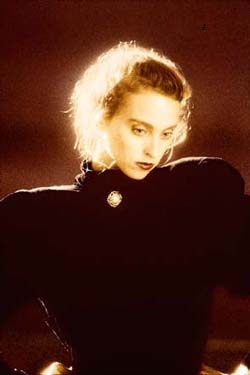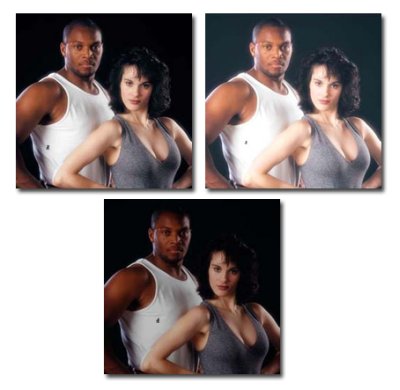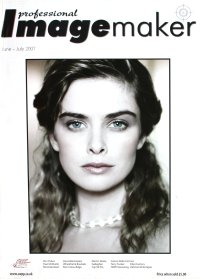articles/Lighting/lightingfordigital2-page1
Understanding Metering and Exposure for Photography - part 1 of 1 2
by Dave Montizambert Published 01/06/2007

Dave Montizambert looks at Metering - a lost art?
The first step to lighting for digital is, understanding the lost art of metering. Let's start off with a look at basic metering for those of you who never did learn and for those of you who have forgotten. Once you take your camera off automatic and set it to manual and then pick up the metering tool of choice - a hand-held meter - the first question you need to ask yourself is, "What should I meter for?" Imagine a portrait of two people such as the two yoga instructors, Tony and Gillian, in Image 2 - Tony with dark flesh and Gillian with very light flesh. Which of these two should we favour with our meter? The one that is paying you is a good answer but is technically speaking not correct. If we favour the dark skin by taking a reflective meter reading directly off a fully-lit area of that flesh and set our camera to that setting, we will end up with an exposure that looks like Image 3. If we favour the lighter skin by taking a reflective meter reading directly off a fully lit area of that flesh, we will end up with an exposure that looks like Image 4. Are either of these exposures correct?
Traditionally we have been taught to under-expose white objects/subjects and to over expose dark ones to show more shape. But, what if they are both in the same shot as we see in images 2, 3, and 4, which one should you expose for? The answer is neither, you don't expose for tones, you light for tones - create shape and form on light objects primarily with shadow, and create shape and form on dark objects primarily with specular highlights (reflections of light sources - shine). So if you don't expose for tones, then what do you expose for?

I am going to answer all of these questions; I'm just trying to be dramatic by not answering them straight away so please humour me and read on.
If I were to use a hand-held meter to take a reflective meter reading off a solid-white, evenly-illuminated light object such as a white seamless backdrop paper and positioned the meter so that it only saw the white paper, it would tell us an aperture/shutter speed combination relative to camera sensitivity setting (ISO) to set our cameras at for what it thinks is a good exposure. If we set our cameras to this setting, let's say that it is f11 at 1/60th at 100ISO, and take a picture, what do you suppose this white seamless paper would look like in this image?
Now suppose we swap-out the white seamless paper with a black seamless paper, leave the lighting as is, take another reading (f2 at 1/60th at 100ISO) and then capture a second image with this new setting. What do you suppose this black seamless paper would look like in this image?
Okay one more time (photography, just like fairy tales, always has things happening in threes). Now suppose we swap-out the black seamless paper with a mid-grey seamless paper, leave the lighting as is, take another reading (f5.6 at 1/60th at 100ISO), and then capture a third image with this new setting. What do you suppose this mid-grey seamless paper will look like in this image?
The answer to the last three questions is this - they all appear the same! They all appear to be middle grey. Is this correct, should a white seamless backdrop be middle grey? No! Should a black seamless backdrop be middle grey? No! Should a mid-grey seamless backdrop be middle grey? Why yes.
Then why does the reflective meter tell us to set our cameras at a setting that will make the white backdrop and the black backdrop incorrectly exposed but yet gives us a correct setting to make a correct exposure of the mid-grey backdrop?
The reason for this is - a meter knows only one thing, middle grey, it tries to make everything it sees appear middle grey. In fact if it is seeing more than one tone, it will average all those tones to make what it thinks will be a middle grey tone. Since the meter tries to make everything it sees appear middle grey, then a reading off a middle grey object like the mid-grey backdrop, will give you a setting to set your camera at to make it appear middle grey, and since it's true tonality is middle grey, it will be properly exposed.
You are currently on page 1
- Understanding Metering and Exposure for Photography page 1
- Understanding Metering and Exposure for Photography page 2
1st Published 01/06/2007
last update 09/12/2022 14:55:48
More Lighting Articles
There are 16 days to get ready for The Society of Photographers Convention and Trade Show at The Novotel London West, Hammersmith ...
which starts on Wednesday 14th January 2026





